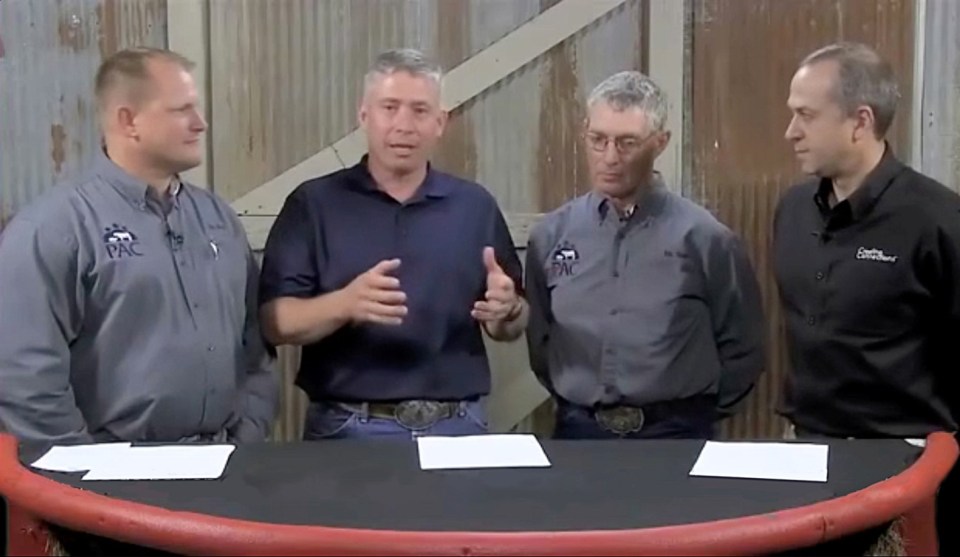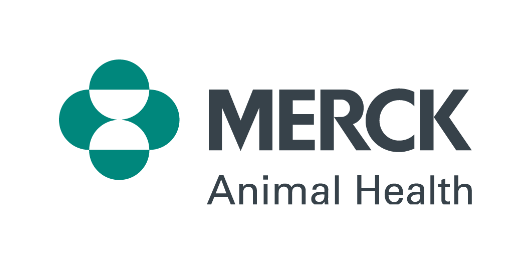Merck Animal Health CreatingConnections™ Module Focuses on Feedlot Stockmanship
MADISON, N.J., December 8, 2015 – Stockmanship is critical to the health and well-being of cattle and ultimately, the success of an operation. This means producers must continually put an emphasis on enhancing these vital skills and reiterating their importance to everyone who works with the animals. Merck Animal Health is committed to supporting cattlemen in their efforts to make continuous improvements through its CreatingConnections™ Educational Series. The second module is now available at www.creatingconnections.info, and features leading cattle-handling experts who provide valuable insights on achieving excellent feedlot stockmanship.
“In this video, our focus is on building the animal’s confidence and trust so that the cattle are willing to work naturally for the stockman,” says Paulo Loureiro, D.V.M., Merck Animal Health. “Cattle don’t understand words, but they understand your posture, attitude and behavior. So, using proper distance, angle and speed when approaching cattle in the feedlot are keys to getting them to move how and where you want. The end goal is to benefit the animal, but also make our customers’ jobs more rewarding.”
In this module, Dr. Loureiro is joined by Tom Noffsinger, D.V.M., and Kip Lukasiewicz, D.V.M., both with Production Animal Consultation (PAC), who are well known and respected for their expertise in low-stress cattle handling. Dan Thomson, D.V.M.,ansas State University,acilitates the discussion throughout the videos and shares his own perspectives.
Broken up into seven video lessons, the experts explain cattle behavior and natural instincts, as well as provide step-by-step guidance on how to build the animal’s trust and reduce anxiety. The end goal is to get cattle to voluntarily move in a calm, orderly manner so that the stockman can easily accomplish such tasks as observing an individual animal’s gait and health or moving an entire pen of cattle on to the processing chute.
“Feedlot stockmanship is completely a team effort. The animal’s first experience with a handler will influence subsequent experiences,” says Dr. Noffsinger. “So each person, from acclimation to processing to the pen riders to the hospital crew, needs to know how to read and approach cattle. Whether cattle are flowing or not all comes down to the skills of the handlers.”
The CreatingConnections Education Series is an example of Merck Animal Health’s commitment to its customers improving animal well-being and overall herd health through ongoing education. The modules were developed in partnership with PAC and BCI.
For more information about the CreatingConnections Educational Series and other available resource materials, go to www.creatingconnections.info.
About Merck Animal Health
Today’s Merck is a global healthcare leader working to help the world be well. Merck Animal Health, known as MSD Animal Health outside the United States and Canada, is the global animal health business unit of Merck. Through its commitment to the Science of Healthier Animals™, Merck Animal Health offers veterinarians, farmers, pet owners and governments one of the widest range of veterinary pharmaceuticals, vaccines and health management solutions and services. Merck Animal Health is dedicated to preserving and improving the health, well-being and performance of animals. It invests extensively in dynamic and comprehensive R&D resources and a modern, global supply chain. Merck Animal Health is present in more than 50 countries, while its products are available in some 150 markets. For more information, visit www.merck-animal-health.com or connect with us on LinkedIn and Twitter.
Merck Forward-Looking Statement
This news release includes “forward-looking statements” within the meaning of the safe harbor provisions of the United States Private Securities Litigation Reform Act of 1995. These statements are based upon the current beliefs and expectations of Merck’s management and are subject to significant risks and uncertainties. If underlying assumptions prove inaccurate or risks or uncertainties materialize, actual results may differ materially from those set forth in the forward-looking statements.
Risks and uncertainties include but are not limited to, general industry conditions and competition; general economic factors, including interest rate and currency exchange rate fluctuations; the impact of pharmaceutical industry regulation and health care legislation in the United States and internationally; global trends toward health care cost containment; technological advances, new products and patents attained by competitors; challenges inherent in new product development, including obtaining regulatory approval; Merck’s ability to accurately predict future market conditions; manufacturing difficulties or delays; financial instability of international economies and sovereign risk; dependence on the effectiveness of Merck’s patents and other protections for innovative products; and the exposure to litigation, including patent litigation, and/or regulatory actions.
Merck undertakes no obligation to publicly update any forward-looking statement, whether as a result of new information, future events or otherwise. Additional factors that could cause results to differ materially from those described in the forward-looking statements can be found in Merck’s 2013 Annual Report on Form 10-K and the company’s other filings with the Securities and Exchange Commission (SEC) available at the SEC’s Internet site (www.sec.gov).

The CreatingConnections™ Educational Series presents practical techniques to enhance cattle well-being and health. In the newly released second module, Kip Lukasiewicz, D.V.M., with PAC; Dan Thomson, D.V.M., with the Kansas State University; Tom Noffsinger, D.V.M., with PAC; and Paulo Loureiro, D.V.M., Merck Animal Health, discuss how to ensure excellent stockmanship in the feedlot.
